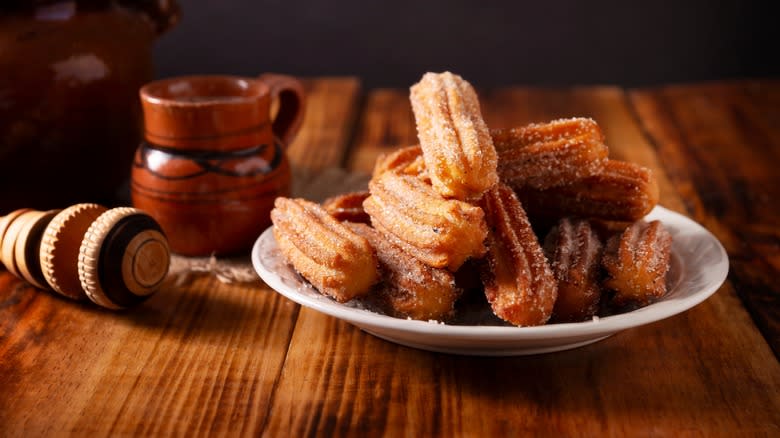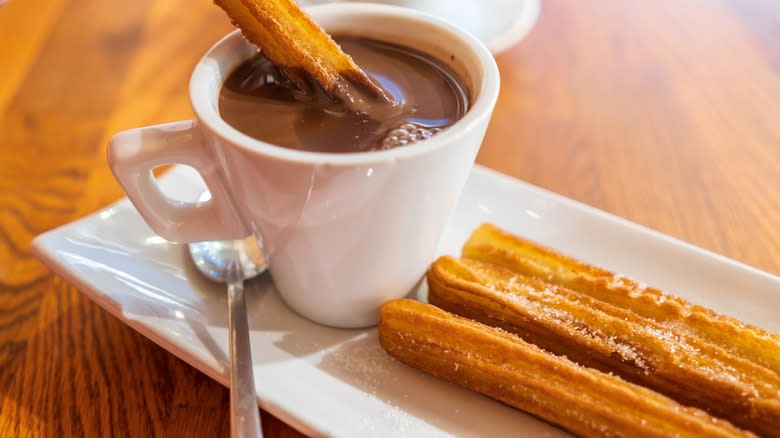Churros May Not Have Originated From Spain

One of the proudest points of any nation is its culinary culture and heritage, and Spanish cuisine is full of iconic, globally beloved dishes. Spanish tortillas, paella, papas bravas, and sangria are but a few delectable sources of pride for Spaniards.
Churros are a dessert that holds a special place in Spain's collective culinary pride. Not only are they enjoyed as street food, in cafes, and as festival fare, but there are also shops called churrerias in every town and city dedicated to making them.
Spain lays claim to churros, but food historians dispute their place and period of origin. Spaniards theorize that the churro, named for a type of big-horned sheep, was invented by Spanish shepherds in the 16th century to enjoy bread without having to bake it. However, arguing theories attribute their origins to China; The long, thin shape, recipe, and frying method resembles a longstanding Chinese delicacy known as youtiao. Historians claim that Portuguese explorers brought the recipe for youtiao to the Iberian peninsula around the 16th century where it developed into the modern-day churro.
Still, other theorists date churros back to the Moorish occupation of Spain in the 12th century, claiming that fried dough fritters had been an Arab tradition since as far back as the 8th century. By that rationale, the oldest documented fried dough tradition dates all the way back to ancient Rome. Despite the controversy surrounding their origin story, Spain's role in their current popularity is indisputable.
Read more: 25 Chocolate Brands, Ranked Worst To Best
Churro Traditions In Spain And Beyond

Spain became a major colonial powerhouse around the time of churros' purported origin story. It's therefore no coincidence that churros are a popular dessert and snack in most of Spain's former colonies, from Mexico to the Philippines. In fact, New World influences comprise the now inseparable and famous duo of churros and chocolate.
Mexico is the birthplace of cacao, the key ingredient in modern-day chocolate. The Aztecs enjoyed cacao as a rich yet bitter drink. When the first Spanish conquistadors came to Mexican soils, they sampled cacao and were undoubtedly smitten, bringing cacao back to the Old World where it was transformed into the sweet, luscious bars, powders, syrups, and drinks we know today.
In Spain, Mexico, and many other Latin American countries, churros are almost always served with chocolate. However, the form of chocolate changes from country to country. In Mexico and the U.S., churros are served with hot chocolate. We often dip a cinnamon sugar-dusted churro into a milky cup of hot chocolate, saturating it with chocolate while also infusing our hot chocolate with cinnamon. In Spain, however, hot chocolate isn't for drinking but instead is served alongside churros as a thick dipping sauce.
Read the original article on Tasting Table.

